Step 1: Anticipation
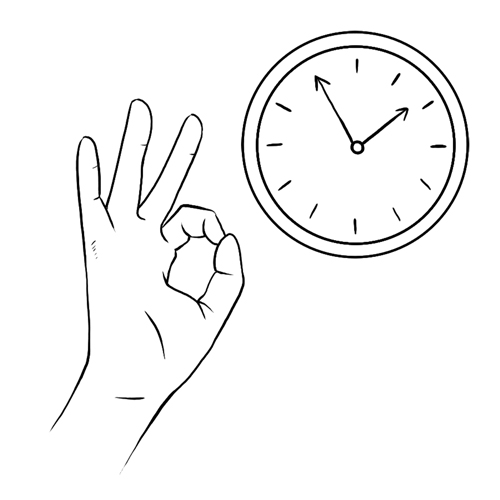
|
See the full description here
Summary:
Collaborate and form a team with your child. When you invest the time to form a strong team, children feel more comfortable and less anxious – this will help you complete the care with less stress – for you and your child.
Use these tips, from the start, to set the stage for a positive care procedure:
- Create the right moment: integrate the care in a routine.
- Alert your child to the needed care and communicate together.
- Form a team with your child: Encourage autonomy by offering realistic choices such as the method of distraction. Stay tuned to your child. Manage pain and anxiety, using distraction and positioning for comfort.
|
|
Step 2: Preparation
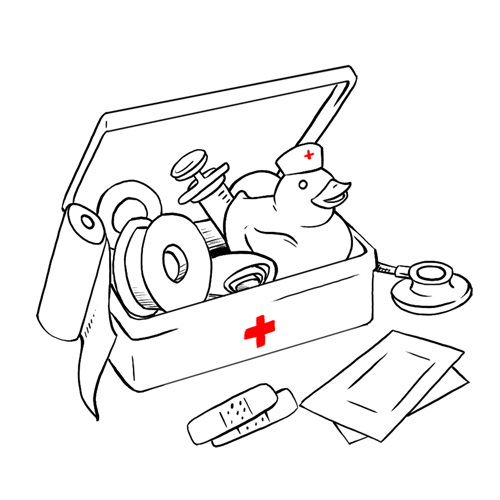
|
See the full description here
Summary:
- Prepare the environment: Identify a routine place for care. Close windows, doors and fans. Wash and dry the work surface and gather the needed materials for the care and to distract your child.
- Prepare your child: Get help if needed. Position your child for comfort to receive the care and start to use the selected distraction method.
- Prepare yourself: Find the right time when you are ready to provide the care safely. Review the list of care steps. Wash your hands.
Now that you are ready to start the care procedure, take the opportunity to encourage and praise your child.
|
|
Step 3: Procedure

|
See the full description here
Summary 3 key concepts:
- Safety: Carefully follow the care practice steps as you have been taught.
- Flexibility: Be ready to adjust according to your child’s reactions during the procedure. As needed, reposition or select an alternative distraction strategy. Follow your child’s pace and rhythm.
- Collaboration: Reassure your child, verbally and non-verbally. Acknowledge your child’s emotions and reactions. Help your child differentiate between the different sensations during a procedure.
|
|
Step 4: Prepare the parenteral nutrition bag and add the additives, if necessary
|
Step 5: Position your child

|
Position your child:
- to securely reach the catheter entry site,
- in one of the positions discussed with your healthcare team,
- depending on comfort, age and ability to collaborate.
Why ? This step ensures the safety and allows the rest of the procedure.
|
|
Step 6: Monitor the catheter site
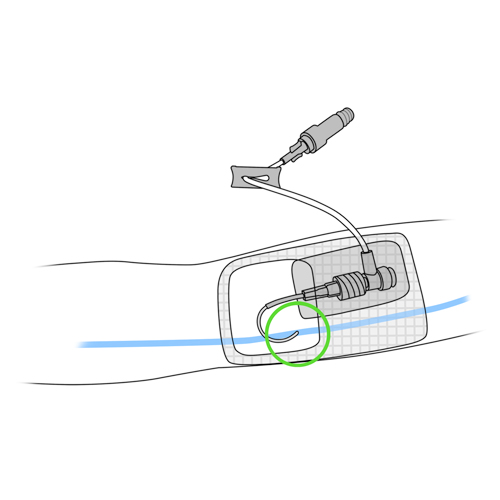
|
Refer to steps 5 through 8 of the care method “Catheter site monitoring”.
Why ? This step helps to quickly detect problems.
|
|
Step 7: Irrigate the catheter with the saline solution
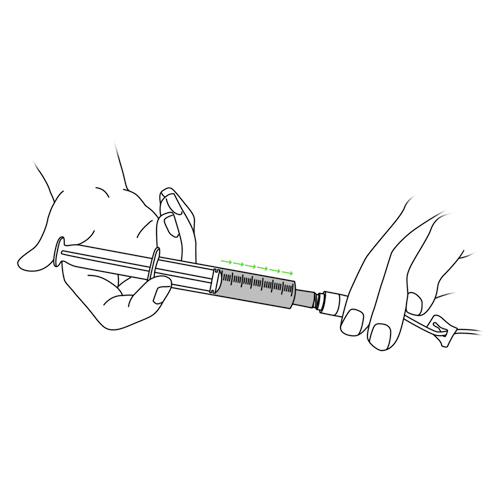
|
Why ? This step removes deposits that accumulate in the catheter and prevents it from blocking.
|
|
Step 8: Connect the bag tubing to the needleless connector

|
- Disinfect the needleless connector.
- Take the tubing with one hand and remove the protective cap with the other.
- Make sure that nothing touches the end of the bag tubing to avoid contaminating it.
- Take the needleless connector between the thumb and forefinger of one hand.
- With the other hand, insert the end of the tubing.
- Turn clockwise, about a quarter turn, until the connection is tight.
- Open all clamps.
Why ? This step allows the subsequent procedure and avoids contamination.
|
|
Step 9: Turn on the pump

|
- Press and hold the “Power switch” on the right side of the pump.
- The pump does various self-tests and beeps six times after the tests are completed.
- The home screen appears then.
- Press and hold the START/STOP button.
- When “Start Pump?” appears on the home screen, select Yes.
Why ? This step allows solution administration.
|
|
Step 10: Secure the bag
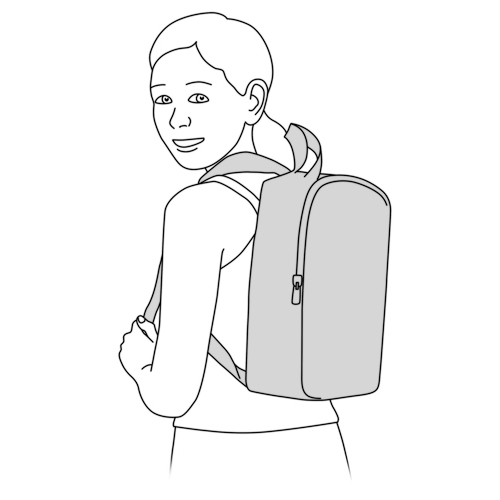
|
- Place the parental nutrition bag, tubing and pump in the backpack and keep it close to your child.
- Be careful to place the pump securely.
- Verify that the tubing is not bent or pinched. If available, a hospital style intravenous pole can be used to hang the parenteral nutrition bag overnight.
Why ? This step is used to protect the pump and ensure proper flow of the solution.
|
|
Step 11: Monitor the solution administration
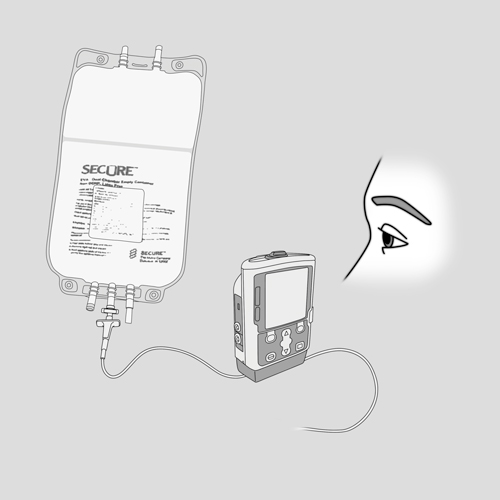
|
- Monitor the site of the catheter, dressing, tubing and pump operation, following the frequency recommendations of your child’s healthcare team.
- Check that the parenteral nutrition bag empties gradually.
Why ? This step makes it possible to quickly detect problems during the administration of the solution.
|
|
Step 12: Turn off the pump

|
When the pump signals the prescribed end of the infusion:
- Press the “STOP / START” button on the pump.
- When “Stop pump?” appears on the screen, select “Yes“.
- Close the clamps of all tubing.
- Press the “Power switch” on the right side of the pump to shut it off.
- When the message “Power down?” appears, select “Yes“. The pump then powers off.
Why ? This step allows the rest of the procedure.
|
|
Step 13: Disconnect the tubing from the needleless connector
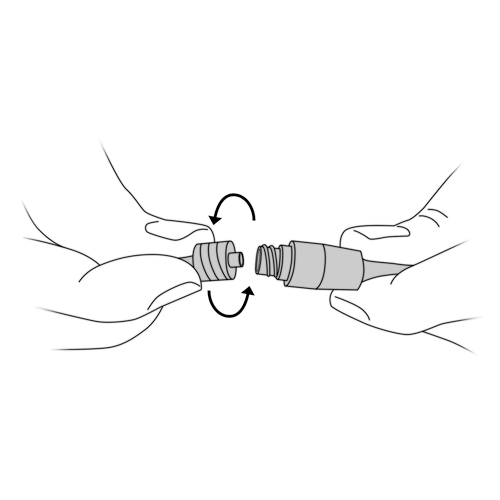
|
- Wash your hands again.
- Hold the needleless connector between the thumb and forefinger of one hand.
- With the other hand, disconnect the tubing from the bag by turning its end counterclockwise.
- Put empty bag, pump and tubing aside.
Why ? This step makes it possible to prepare for the irrigation of the catheter.
The use of both your hands prevents the needleless connector from unscrewing instead of the tubing.
|
|
Step 14: Irrigate the catheter with the saline solution

|
Why ? This step removes deposits that accumulate in the catheter and prevents it from blocking.
|
|
Step 15: Irrigate the catheter with the locking solution, if necessary
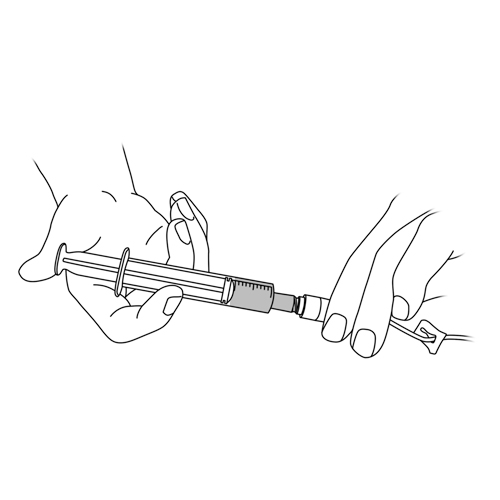
|
Instructions here.
Why ? This step prevents the formation of clots at the tip of the catheter when a prolonged delay is expected before its next use.
|
|
Step 16: Monitor the catheter site

|
- Refer to steps 5 through 8 of the care method “Catheter site monitoring”.
- At the end, make sure all the clamps are closed.
Why ? This step allows you to quickly detect problems.
|
|
Step 17: Remove the cassette from the pump
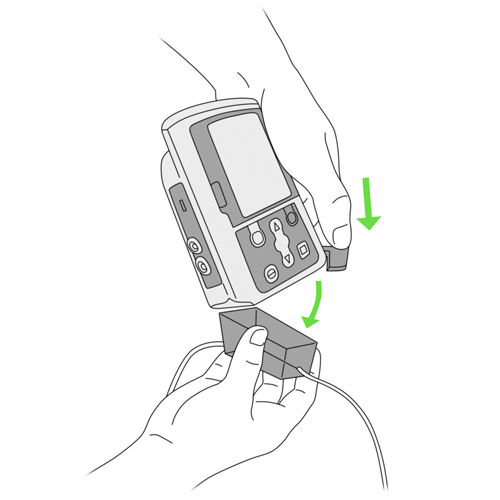
|
- Lower the cassette latch until it comes loose.
- Throw the tubing and empty bag into the trash.
Why ? This step prepares the pump for the next use.
|
|
Step 18: Recovery
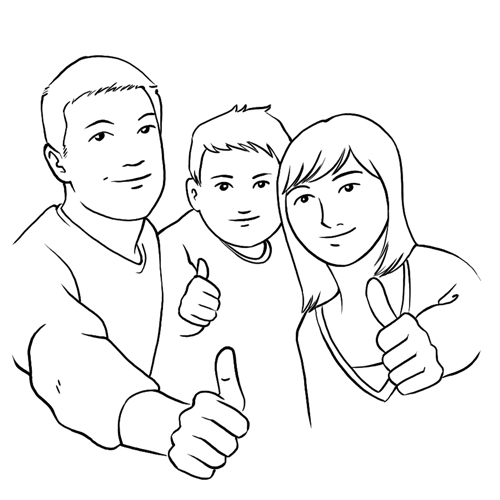
|
See the full description here
Summary:
The treatment is finished. Wash your hands again.
Be prepared to recognize the challenges faced and to provide positive feedback. Help your child recognize his/her strengths. Acknowledge the collaborative teamwork.
- Listen to what your child says about the parts of the procedure that were difficult or painful.
- Comfort your child and recognize your child’s collaboration with positive feedback.
- Highlight your child’s specific strengths that helped make the procedure positive.
- Discuss with your child what might be done the same or differently the next time the care is needed.
- Keep your promises if you have promised a reward, follow through.
- Reward yourself too.
|
|
![]()